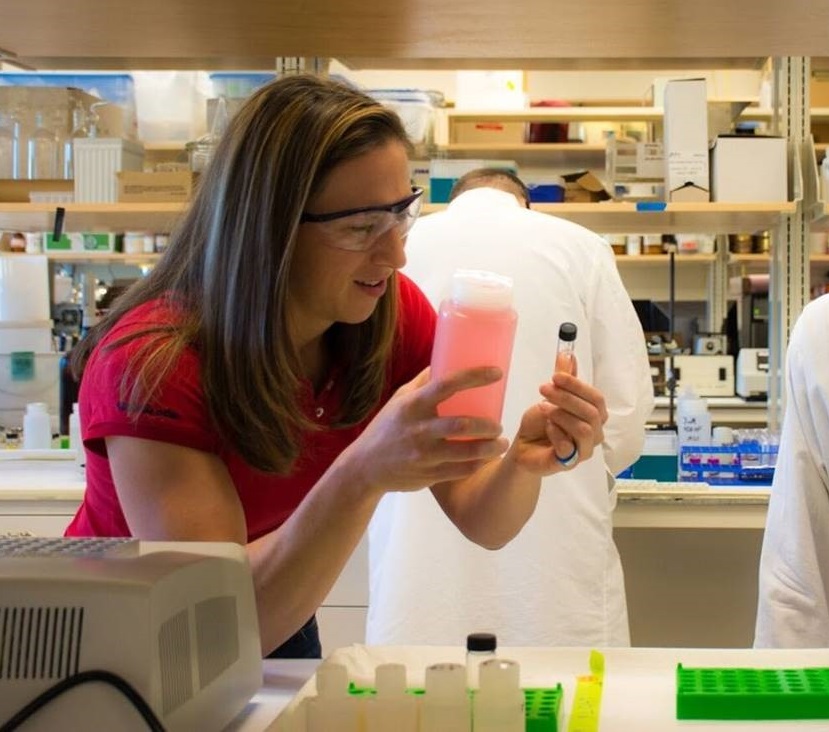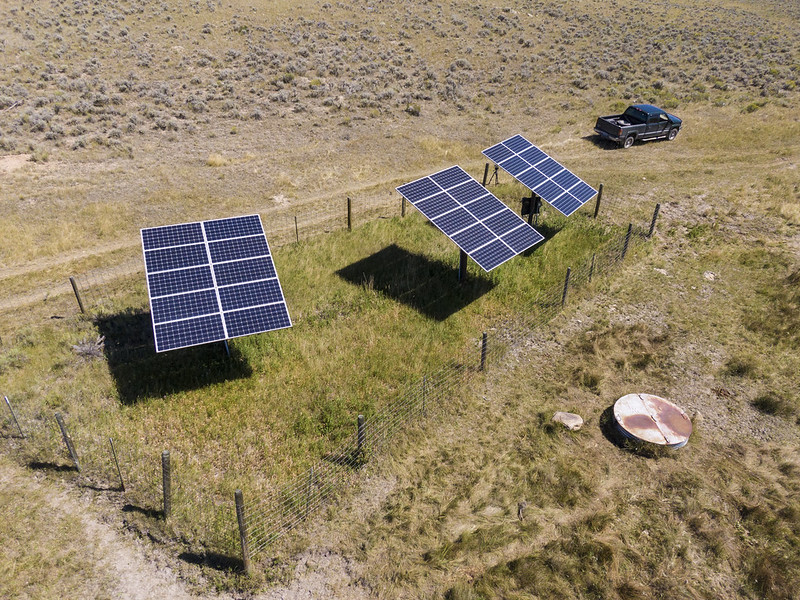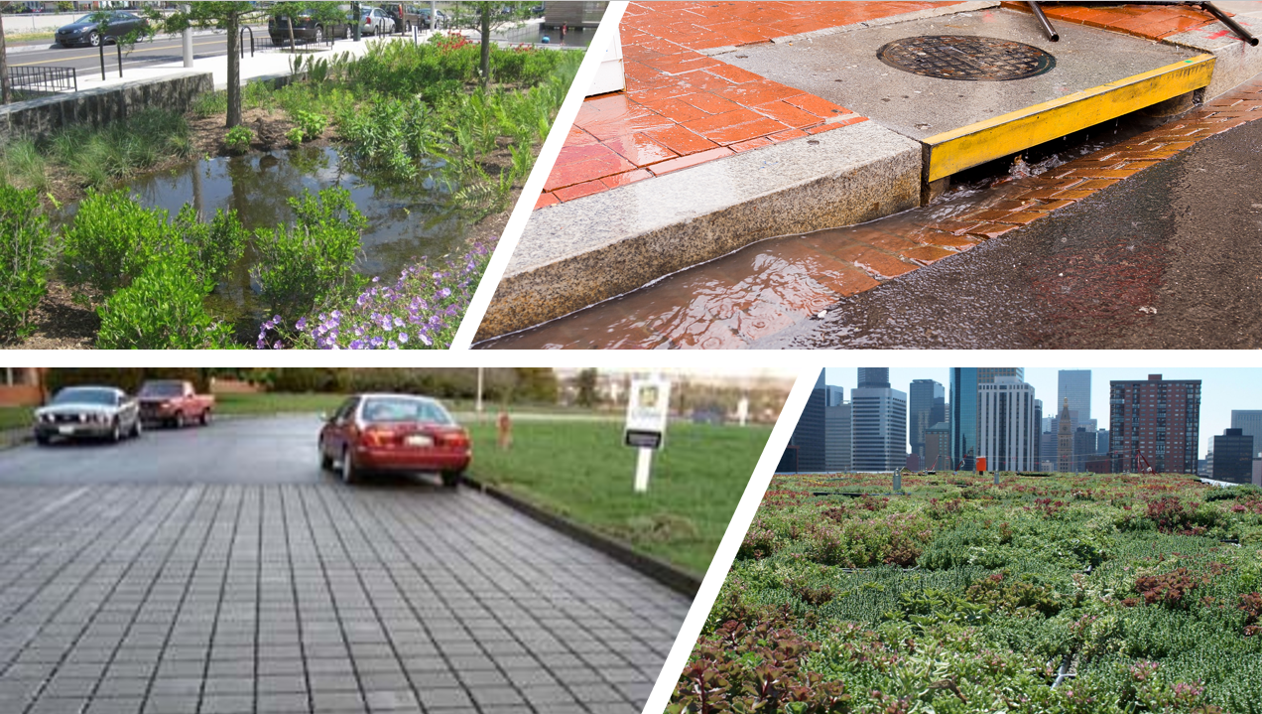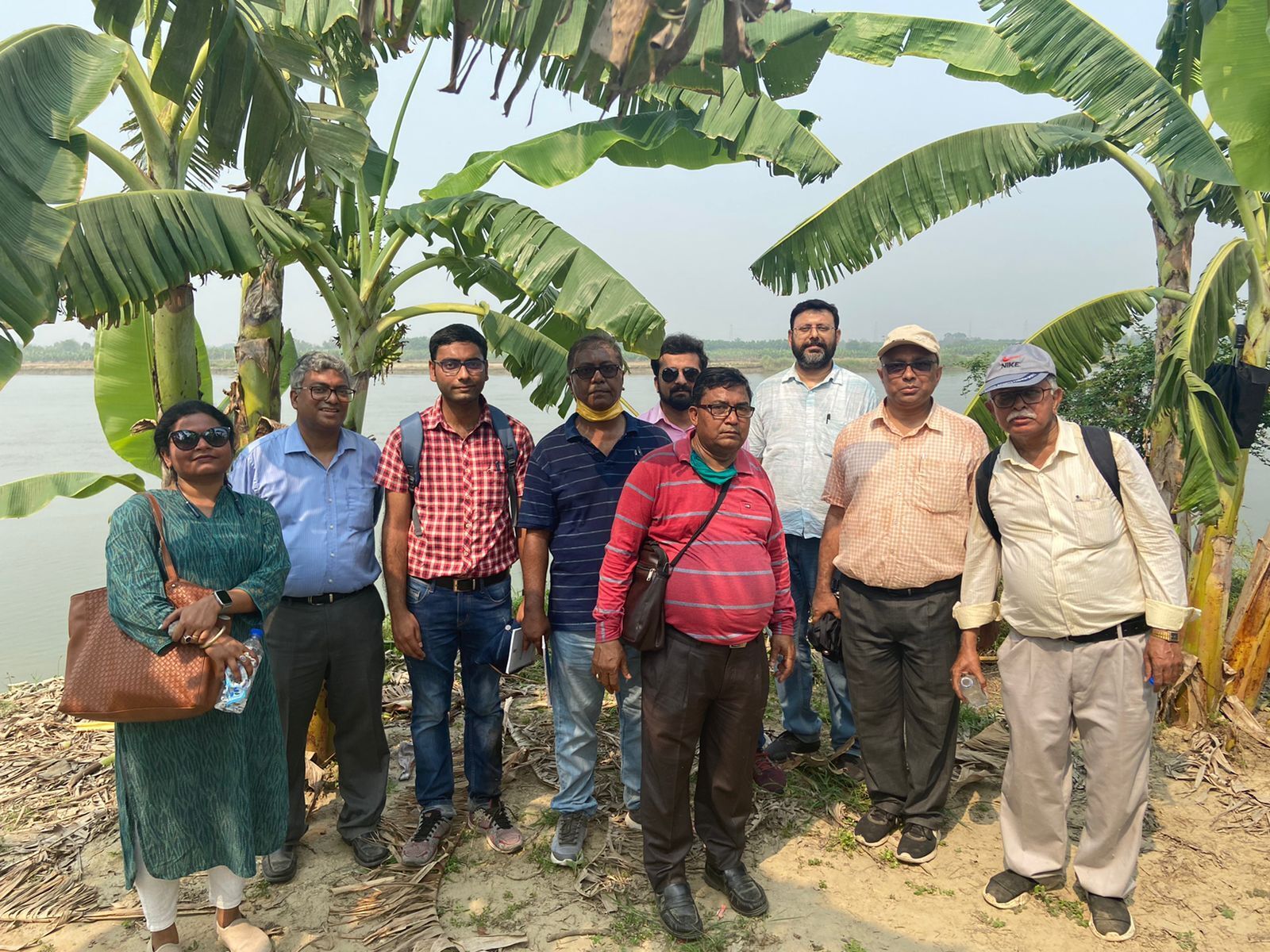<< Back to Media
U.S. Federal Agencies Create New Technologies to Help Solve Climate Challenges
April 19, 2022
U.S. Federal agencies spearhead some of the most innovative technologies tackling the climate crisis. The Department of Energy provides safe and sustainable clean energy options with advanced nuclear technology. U.S. farmers and ranchers now have broader access to local climate data collected, collated, and distributed by the Department of Agriculture. And thanks to the Environment Protection Agency’s development of an “energy-environment-economic optimization model” (a mathematical tool), U.S. cities can determine which clean energy resources and technologies can best serve their communities, reduce costs, and meet climate targets.
These examples are from just three of the twenty-one federal agencies that make up the National Climate Task Force the Biden Administration established a year ago. To date, they are delivering on a mandate to reduce climate pollution and increase resilience to the impacts of climate change.
A “Whole-of-Government” Climate Policy
One of President Biden’s first acts in office was to issue an Executive Order on Tackling the Climate Crisis at Home and Abroad. Taking a whole-of-government approach, the order called on all U.S. Federal Government agencies to “organize and deploy the full capacity of its agencies to combat the climate crisis.” The White House established a National Climate Task Force comprising the Secretaries and heads of twenty-one U.S. Federal agencies. They reported to a National Climate Advisor, Gina McCarthy, in the newly installed White House Office of Domestic Climate Policy (Climate Policy Office). McCarthy, in turn, coordinates the domestic policy-making process and monitors the implementation of the President’s domestic climate-policy agenda that includes a government-wide approach to:
- Reduce climate pollution
- Increase resilience to the impacts of climate change
- Protect public health
- Conserve land, water, and biodiversity
- Deliver environmental justice
- Spur jobs and economic growth, primarily through innovation, commercialization, and deployment of clean energy technologies and infrastructure
“The Federal Government must drive assessment, disclosure, and mitigation of climate pollution and climate-related risks in every sector of our economy, marshaling the creativity, courage, and capital necessary to make our Nation resilient in the face of this threat. Together, we must combat the climate crisis with bold, progressive action that combines the full capacity of the Federal Government with efforts from every corner of our Nation, every level of government, and every sector of our economy.”
Executive Order on Tackling the Climate Crisis at Home and Abroad, January 27, 2021
As a result, all federal procurement, property, public lands and waters, and financial programs are now aligned to support a robust climate action agenda.
To further support U.S. climate policy, the Infrastructure Investment and Job Acts Bill passed in November 2021 has allocated billions of dollars for federal agencies to further their research in clean energy. The Bill offers to fund infrastructure planning for micro and small modular nuclear reactors, carbon reduction, including a carbon capture and removal technology program, and other climate change mitigation and resiliency grants and programs.
U.S. Department of Energy
Nuclear power is the largest domestic source of clean energy. It provides about one-fifth of all electricity in the United States and 50 percent of carbon-free electricity. But it also produces radioactive waste that must be safely disposed of and stored.
In support of the Infrastructure Bill, the Department of Energy’s Advanced Research Projects Agency-Energy (ARPA-E) program announced it will fund a new program to resolve used nuclear fuel (UNF) waste and storage challenges. The (CURIE) Program, which stands for Converting UNF Radioisotopes Into Energy and is named in honor of pioneering physicist and chemist Marie Curie, received $48 million in funding to reduce the disposal impact of UNF and support a national strategy to deal with waste safely and securely.

Dr. Jenifer Shafer, Program Director of CURIE. Photo: Department of Energy.
“We have approximately 80,000 metric tons of used nuclear fuel that does not have a disposal and use plan. There are technical solutions that could simplify disposal and provide opportunities for using crucial elements that are already enriched in used nuclear fuel relative to their abundance in nature.”
Dr. Jen Shafer, Program Director of CURIE, Department of Energy
An additional $36 million also announced in March will fund eleven more projects at U.S. universities and laboratories projects to increase the use of nuclear power as a source of clean energy and limit the amount of waste.
“Developing novel approaches to safely manage nuclear waste will enable us to power even more homes and businesses in America with carbon-free nuclear energy. ARPA-E is doing just that by supporting companies and universities that are working on next-generation technologies to modernize advanced reactors and strengthen the nation’s clean energy enterprise”
U.S. Secretary of Energy, Jennifer M. Granholm
ARPA-E also funds a three-year, $35 million research effort to reduce methane emissions from the coal, oil, and gas sector. These three sources are responsible for 10 percent of human-caused methane (a greenhouse gas) emissions. If successful, the REMEDY (Reducing Emissions of Methane Every Day of the Year) program could dramatically reduce U.S. greenhouse gas (GHG) emissions at a low cost.
U.S. Department of Agriculture
In response to President Biden’s “whole-of-government” approach to address climate change, the Department of Agriculture took a “whole-of-Department” approach as outlined in its 2021 Action Plan for Climate Adaptation and Resilience. The plan identifies five vulnerabilities due to climate change that the USDA must address: decreased agricultural productivity, threats to water quantity and quality, disproportionate impacts to vulnerable communities, severe weather events, and stress on natural and built infrastructure on public lands. It then proposes five adaptation actions to build resilience among U.S. agriculture and forestry sectors and rural and urban communities.

A solar-powered electric well pump and distribution system installed for Montana cattle ranchers with assistance from the USDA. Montana. April 2019. Photo: USDA
One of these actions broadens access to and availability of climate data at regional and local scales. The USDA’s new Ranch Drought Monitoring Dashboard provides information to help ranchers in the Great Plains and Southwest U.S. make decisions about forage productivity in the upcoming growing season. The dashboard offers an interactive display of drought and precipitation data, outlooks, on-the-ground condition reports, vegetative drought stress, and forage productivity maps. The data answers the most pressing questions raised by ranchers, including: How severe is the drought, and how long might it last? How much forage can I expect to grow?
“When ranchers can’t find answers to these questions, they may be more likely to take a ‘wait and see’ approach about drought before acting to reduce its impact. If we can provide a resource that offers answers and information that address those questions, we can help ranchers be more proactive during drought. So that’s what we did.”
Tonya Haigh, National Drought Mitigation Center, USDA
The dashboard offers data from the previous 40 years to help ranchers make current decisions based on past management practices and outcomes.
Not only farmers and ranchers benefit from USDA’s new climate resilience tools and technologies. Urban planners can use the USDA’s Center for Urban Forest Research (CUFR) Tree Carbon Calculator (CTCC) to estimate urban tree carbon storage and energy effects and project the benefits of planting projects. Users can access quantitative data on carbon dioxide sequestration and the effects of building heating and cooling energy provided by individual trees. The tools can estimate greenhouse gas benefits for existing trees based on data from 16 cities and the top 20-25 inventoried tree species from those cities. It can also be used to forecast future benefits. The CTT produces information on carbon dioxide stored in the tree over many years as well as sequestered over the previous year and can determine the following:
- Annual energy savings in kWh of electricity (cooling) and MBtu or GJ(heating) per tree
- Carbon dioxide equivalents of these energy savings
And just recently, Agriculture Secretary Tom Vilsack announced that the USDA will invest $1 billion in partnerships with U.S. climate-smart farmers, ranchers, and forest landowners. The new Partnerships for Climate-Smart Commodities finances pilot projects that create market opportunities for U.S. agricultural and forestry products that use climate-smart practices and include innovative, cost-effective ways to measure and verify greenhouse gas benefits. A climate-smart agricultural commodity is produced using agricultural (farming, ranching or forestry) practices that reduce greenhouse gas emissions or sequester carbon.
“America’s farmers, ranchers, and forest owners are leading the way in implementing climate-smart solutions across their operations. Through Partnerships for Climate-Smart Commodities, USDA will provide targeted funding to meet national and global demand and expand market opportunities for climate-smart commodities.”
Agriculture Secretary Tom Vilsack, February 7, 2022
Environmental Protection Agency
More than 1,500 U.S. cities and towns have created Climate Action and Adaptation Plans to adapt to a changing climate and mitigate greenhouse gas emissions. City planners and climate change specialists often rely on new tools developed by the Environmental Protection Agency (EPA) to achieve the goals outlined in their plans. The tools developed by EPA helps U.S. communities respond to severe climate change events, such as heavy rainfall and floods. Here are just a few of EPA’s available climate tools:
- The National Stormwater Calculator is a software application tool that helps urban planners and site developers estimate the annual amount of rainwater and frequency of runoff at a specific site. Increased climate-related precipitation and flooding is a specific challenge for communities now and in the coming decades.
- The Climate Resilience Evaluation and Awareness Tool is a risk assessment application that helps water utilities adapt to climate change impacts, including increased droughts and floods, and identify adaptation options to increase resilience.
- Time Series Viewer and Change Analysis Tool on EPA’s EnviroAtlas is an interactive web-based tool allowing users to view historical and future environmental variables from 1950 – 2099 in a time-enabled animated map and compare a selected variable (e.g., precipitation) between selected periods. The interactive map also features a community’s assets, vulnerabilities, and natural hazards to help city municipal governments self-assess as they create their climate adaptation plans.

EPA’s open-source Storm Water Management Model is used around the world for planning, analysis, and design related to stormwater runoff. Photo: EPA.
“Americans in every corner of our country are seeing and feeling the effects of climate change: wildfires out West, extreme heat and rain in the Heartland, and historic flooding in the East. Combatting climate change — it’s not optional. It’s essential at EPA. We will move with a sense of urgency because we know what’s at stake. We know that tackling the climate crisis is the single best opportunity we have to strengthen our economy, to put people back to work, and to build a healthier more equitable environment for our communities across America.”
Michael S. Regan, Administrator, Environmental Protection Agency
Washington Business Dynamics Supports Federal Agencies
The team at WBD resonates with Administrator Regan’s statement to “move with a sense of urgency.” As we assist our federal clients in mitigating and preparing for a changing climate, we are also preparing our consultants to help our clients make better decisions around climate change issues.
Our Federal Emergency Management Agency (FEMA) team, part of the Department of Homeland Security, supports FEMA’s strategic priority to prepare U.S. communities to anticipate and adapt to future climate change impacts. Among the three goals of FEMA’s 2022-2026 Strategic Plan, Goal 2 is to “lead whole-of-community in climate resilience.” According to Gina McCarthy, FEMA has become more than a response agency; it has evolved into “a true resilience agency.”
Beyond the U.S. borders, WBD is also helping its client, the U.S. Agency for International Development (USAID), make better decisions about adapting to a changing climate.
Our team assists the USAID Bureau for Humanitarian Assistance (BHA) in proactively taking steps to mitigate future disasters’ effects. Through its Early Recovery, Risk Reduction, and Resilience programs, the BHA is helping communities around the world prepare for and recover from the impacts of climate change.

Local WBD implementing partners for the Cross-Border Infrastructure and Connectivity project conducting a site visit to the future Multi-Modal Freight Village site in Balagarh, West Bengal. April 2022.
In South Asia, WBD assists with the USAID Cross-Border Infrastructure and Connectivity (CBIC) project, where we develop and promote inland waterway transport as one of the cleanest modes of transport. Our engineers are helping to ensure South Asian countries have a sustainable, green vessel infrastructure by offering new technical solutions to lower vessel emissions and increase energy efficiency. WBD technical experts are engaged in activities that provide energy-efficient model design and testing, training and certification for shipbuilding and inspection authorities, and the development of new financing models. As a result, modern vessels in this region will have fewer waste spills and lower greenhouse gas emissions and air pollution. They will improve overall inland waterway operations through lower transport costs, fuel efficiency, and safety.
And finally, this month, we will launch a new line of service to help U.S. municipal governments create and implement a Climate Resilience Plan. The WBD Guide to Building Community Climate Resilience illustrates how our strategic advisors and climate change professionals can help communities develop and implement a Climate Resilience Plan that offers a wide range of benefits, such as decreased traffic and congestion, improved air quality, reduced property and infrastructure damage from climate change events, improved health, better access to parks and green spaces, job creation, and cost savings through energy efficiency projects and risk management.
In a recent communication to all employees, Executive Vice-President Keith Fawcett shared that at WBD, “we seek to be more environmentally conscious, think critically about how our skill sets can be applied to climate action, and inspire one another to do their part in environmental stewardship.”
Author: Mary Jane Maxwell, Ph.D., Senior Expert at Washington Business Dynamics.
